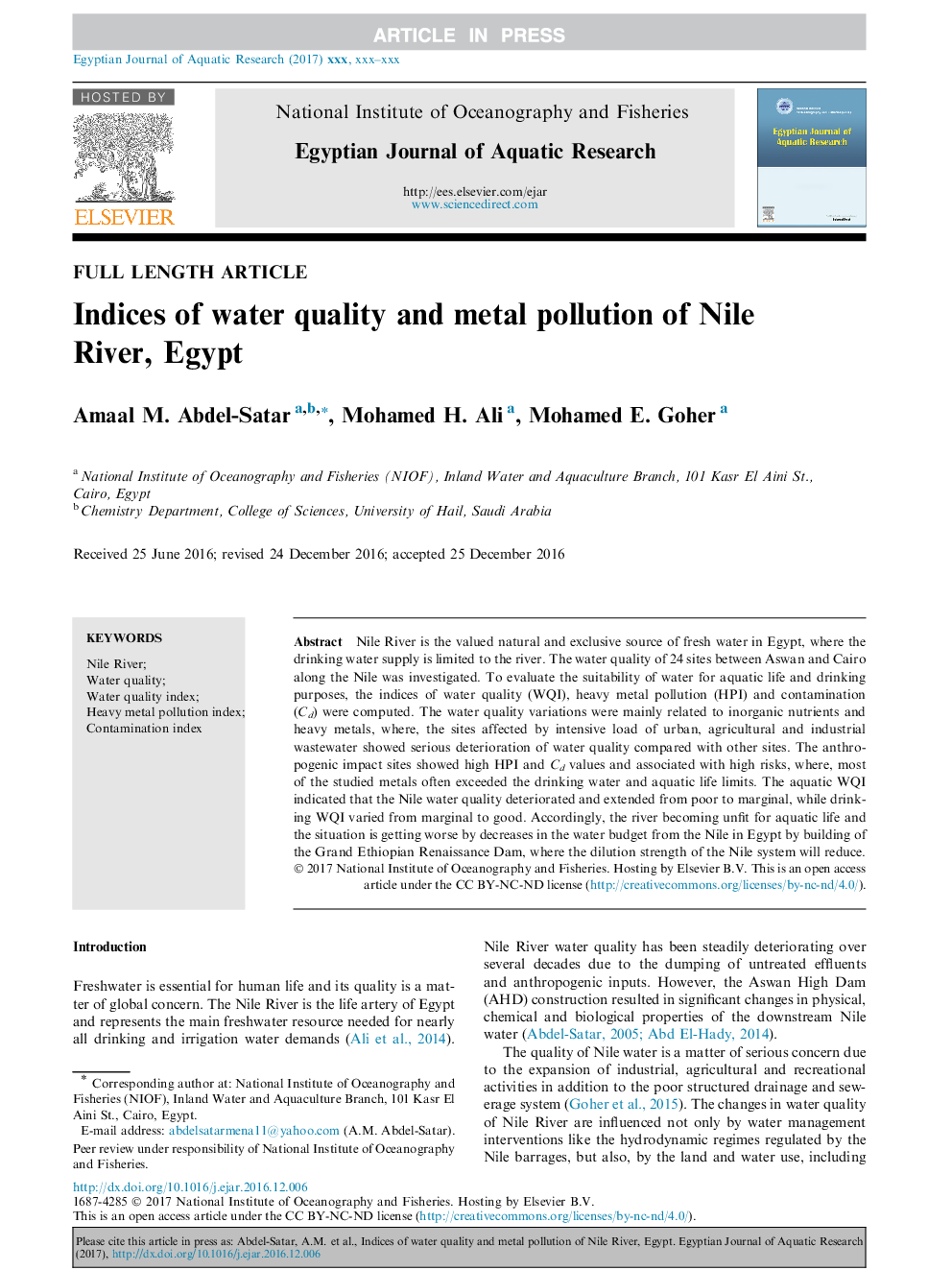| Article ID | Journal | Published Year | Pages | File Type |
|---|---|---|---|---|
| 8875255 | The Egyptian Journal of Aquatic Research | 2017 | 9 Pages |
Abstract
Nile River is the valued natural and exclusive source of fresh water in Egypt, where the drinking water supply is limited to the river. The water quality of 24 sites between Aswan and Cairo along the Nile was investigated. To evaluate the suitability of water for aquatic life and drinking purposes, the indices of water quality (WQI), heavy metal pollution (HPI) and contamination (Cd) were computed. The water quality variations were mainly related to inorganic nutrients and heavy metals, where, the sites affected by intensive load of urban, agricultural and industrial wastewater showed serious deterioration of water quality compared with other sites. The anthropogenic impact sites showed high HPI and Cd values and associated with high risks, where, most of the studied metals often exceeded the drinking water and aquatic life limits. The aquatic WQI indicated that the Nile water quality deteriorated and extended from poor to marginal, while drinking WQI varied from marginal to good. Accordingly, the river becoming unfit for aquatic life and the situation is getting worse by decreases in the water budget from the Nile in Egypt by building of the Grand Ethiopian Renaissance Dam, where the dilution strength of the Nile system will reduce.
Related Topics
Life Sciences
Agricultural and Biological Sciences
Agricultural and Biological Sciences (General)
Authors
Amaal M. Abdel-Satar, Mohamed H. Ali, Mohamed E. Goher,
